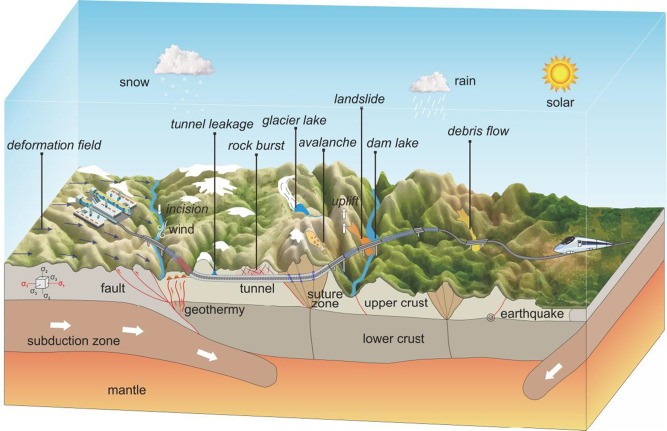New research progress on disaster risk reduction for the Sichuan–Tibet Railway has been made by the researchers of China-Pakistan Joint Research Center on Earth Sciences.
This article investigates the different disaster risks recognized during the various stages of construction of the Sichuan Tibet Railway project, and summarizes the scientific challenges and technical problems faced in relation to disaster risk prevention and control. This work also introduces the scientific deployment and relevant research progress of the Sichuan–Tibet Fund special project initiated by the National Natural Science Foundation of China. Here, we also aim to solve the major fundamental scientific challenges in terms of long term risk prevention and control during the construction of the Sichuan–Tibet Railway, and lay a theoretical foundation to promote breakthroughs in the bottleneck of key technologies. The scientific challenges addressed in the study of disaster risk associated with the Sichuan–Tibet Railway include the following: The quantitative assessment of the activity of deep-large faults and strong earthquake prediction, the evolution of physical fields in areas of strong tectonic activity, the development mechanisms of tunnel hazards, the slope evolution processes under coupled endogenic and exogenic dynamics in alpine gorges, the impact of climate change on the formation and evolution of surface hazards, and the evolution of extreme wind fields in deep-cut canyons.
The relevant research results were published in the international academic journals Engineering Geology. The research was funded by the National Natural Science Foundation of China "Major Basic Science Issues of the Sichuan-Tibet Railway" project (41941017).

Fig. 1. Formation and evolution of railway engineering disasters under coupled endogenic and exogenic influences.
Contact:
Prof. CUI Peng
Institute of Mountain Hazards and Environment, Chinese Academy of Sciences
Chengdu, Sichuan, 610041, China
E-mail: pengcui@imde.ac.cn
